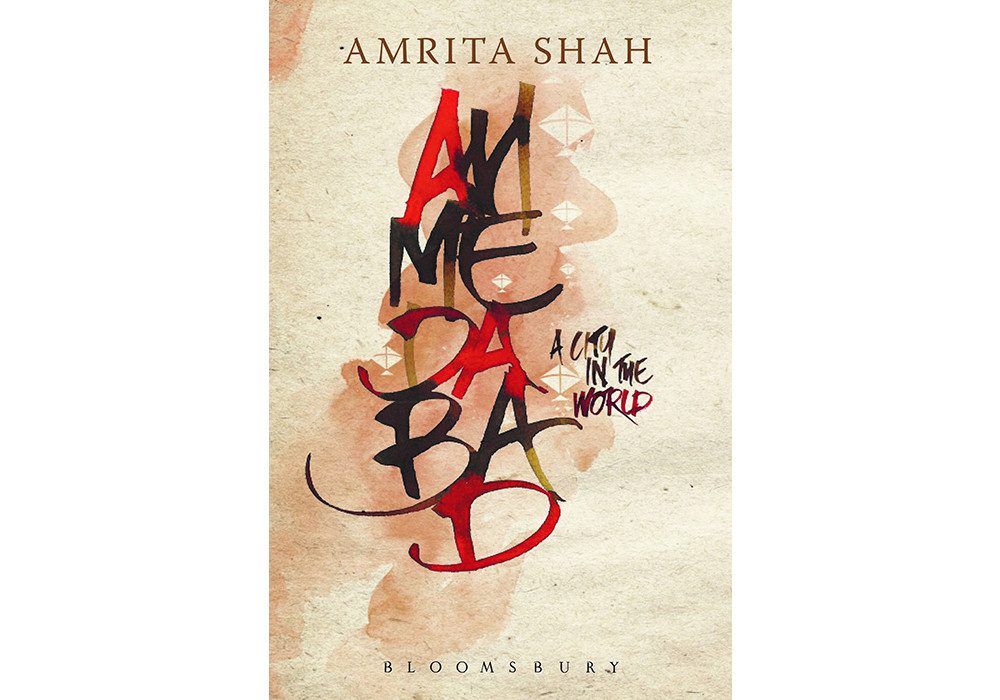Amrita Shah's biography of Ahmedabad is an insightful look at the city’s contradictions, anxieties and complicated relationship with modernity, says Aditya Mani Jha.
Ahmedabad: A City in the World
Amrita Shah
Bloomsbury India
Rs 499 | 216 pp
Anand Patwardhan’s documentary Father, Son and Holy War begins with scenes of destruction from the Bombay riots of December 1992 and January 1993, set to a Hindu rioter’s confident drawl, as he explains how he terrorised Muslims in his locality, destroying Muslim houses and businesses. The prologue ends with the (female) narrator’s voice-over: “Sabak sikhaa diyaa humne. Hum napunsak nahin hain. Choodiyaan nahi pehni hain humne. [We taught them a lesson. We are not impotent. We have not worn bangles.]” Just as Patwardhan’s film identified the path of patriarchal indoctrination as a possible locus for religious violence, Amrita Shah’s masterful new book Ahmedabad: A City in the World identifies a collective sense of emasculation as one of the reasons that even otherwise peace-loving Gujarati Hindus—and Jains, in one case—felt that the 2002 anti-Muslim pogrom was justified, that the Muslims had it coming.
Shah builds this case slowly and meticulously, employing a classical “show, don’t tell” approach. We see how this latent feeling of emasculation surfaces in historical revisionism, in the aggressive chest-thumping of the average Joe (or Jane) and curiously, in over-compensatory behaviour: at one point Shah finds out that the people of Asarwa-Chamanpura, a lower middle-class mixed neighbourhood in Ahmedabad had organised an all-night bhajan performance honouring the memory of a Muslim boy, “an individual of Herculean charm”, loved by one and all in the mohalla.
When the author participates in a heritage walk organised by the Ahmedabad Municipal Corporation, she is confronted with further evidence. The soporific state that such shindigs often bring about is broken when she hears the guide announcing a new “Freedom Walk”, dedicated to the memory of those “who used violence.” This was once unthinkable in the land of Gandhi, but it is now a reality and Shah’s feeble exclamations of surprise are promptly shot down.
When the author participates in a heritage walk organised by the Ahmedabad Municipal Corporation, she is confronted with further evidence. The soporific state that such shindigs often bring about is broken when she hears the guide announcing a new “Freedom Walk”, dedicated to the memory of those “who used violence.”
“He throws a tart, pitying look my way. He is a reedy-thin man probably in his twenties, who volunteers his morning hours, free of cost, to the city. ‘Of course there is Gandhi,’ he says in a manner that is meant to be placatory but manages to convey contempt. ‘But enough said about Gandhi. What of the other freedom fighters? Did you know,’ he asks, the warmth returning to his voice, ‘that there was a bomb factory here, in the city?’ Polite murmurs greet his revelation.”
Then there’s the moment where Shah discovers a book called Gujarat in 1857 by Dr RK Dharaiya of Gujarat University. In the preface, Dharaiya hopes that whatever “misunderstanding about the martial spirit of Gujarat prevails will be removed”—he wants to prove, beyond all reasonable doubt, that Gujaratis were vigorous participants in the 1857 mutiny. However, as Shah puts it, “The compelling motive however, appears to be not so much a matter of achieving historical veracity as much as defending a certain image of Gujarat.”
But Ahmedabad is not merely concerned with mapping the aggressive intent of the Gujarati man. It is a more holistic book than that: it traces the history of how Gujarat became a business centre of rare vitality. It presents a comprehensive deconstruction of the city’s renovation plans, the vision behind the urgent urban planning and the disparity between the ghettos of the city and its affluent sections. Ahmedabad’s complicated relationship with modernity lie at the heart of all of these things.
The book presents a comprehensive deconstruction of the city’s renovation plans, the vision behind the urgent urban planning and the disparity between the ghettos of the city and its affluent sections. Ahmedabad’s complicated relationship with modernity lie at the heart of all of these things.
Shah’s prose is nimble and takes the subject matter to surprising new avenues: a “Buckminster Fuller-inspired geodesic dome”, once a familiar sight on Relief Road, is “now in delicate decay like a stork’s broken wing”. Or when she wonders about the future of the Gujarati middle-class, a people who ascended to riches through generations of parsimony and no-nonsense pragmatism, now anxious about the lulling effects of luxury. “How does the puritanical, assiduous instinct relate to the indolence of the leisure era? Is there not, hidden from the conscious eye, perhaps, some acceleration of pulse, some tightening of heart, some unnamed, vague apparition of dread and loss of control? And the sleeping son, small-built, frail, in the manner of upper-caste Ahmedabadi men, pumping iron at the local gym, who or what will he become?”
Of course, no book about Ahmedabad can be complete without tackling the imposing figure of Narendra Modi. Again and again, Shah meets someone who is not entirely comfortable with talking about 2002, yet is quick to assert that Modi is “a capable man”, or that he did the right thing “by maintaining discipline among the Muslims”, or that he will usher in “a golden age for Gujarat”. Her own observations about the man make for some very funny passages: about his poetry, his penchant for fiddling with cameras at functions, his weakness for making the grand entrance.
Few athletes complete as cinematic a career arc as tennis legend Andre Agassi. There was early Agassi, enfant terrible, painting his nails, growing a lion’s mane, driving fast cars, dating movie stars, being a pain in the ass for fans, commentators and most of all, umpires. There was hibernation Agassi, who sought to clean up his act but was cursed with luck so bad it was almost funny. And finally, there was daddy Agassi, the late-career miracle man who took his kids to centre court, played charity matches with his wife and made twenty-somethings puff and pant and curse the day they had written him off.
“How does the puritanical, assiduous instinct relate to the indolence of the leisure era? Is there not, hidden from the conscious eye, perhaps, some acceleration of pulse, some tightening of heart, some unnamed, vague apparition of dread and loss of control?”
Ahmedabad is the city of the daddy Agassi. It’s just that someone has convinced daddy that he needs to put the war paint and the nail polish back on, and raise hell. After all, it was the hell-raiser who once told us the following nugget of wisdom: “Image is everything.”














